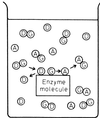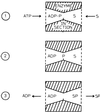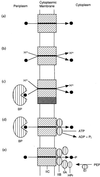Vectorial metabolism and the evolution of transport systems
- PMID: 10960084
- PMCID: PMC94648
- DOI: 10.1128/JB.182.18.5029-5035.2000
Vectorial metabolism and the evolution of transport systems
Figures








Similar articles
-
Bacterial periplasmic transport systems: structure, mechanism, and evolution.Annu Rev Biochem. 1986;55:397-425. doi: 10.1146/annurev.bi.55.070186.002145. Annu Rev Biochem. 1986. PMID: 3527048 Review. No abstract available.
-
Evolution of permease diversity and energy-coupling mechanisms: an introduction.Res Microbiol. 1990 Mar-Apr;141(3):281-6. doi: 10.1016/0923-2508(90)90001-7. Res Microbiol. 1990. PMID: 2281190 Review. No abstract available.
-
Cellular transport mechanisms.Annu Rev Biochem. 1978;47:933-65. doi: 10.1146/annurev.bi.47.070178.004441. Annu Rev Biochem. 1978. PMID: 150255 Review. No abstract available.
-
Transport bicycles.Proc Natl Acad Sci U S A. 1997 May 27;94(11):5508-9. doi: 10.1073/pnas.94.11.5508. Proc Natl Acad Sci U S A. 1997. PMID: 9159101 Free PMC article. Review. No abstract available.
-
Microbial genome analyses: comparative transport capabilities in eighteen prokaryotes.J Mol Biol. 2000 Aug 4;301(1):75-100. doi: 10.1006/jmbi.2000.3961. J Mol Biol. 2000. PMID: 10926494
Cited by
-
Unraveling the evolutionary history of the phosphoryl-transfer chain of the phosphoenolpyruvate:phosphotransferase system through phylogenetic analyses and genome context.BMC Evol Biol. 2008 May 16;8:147. doi: 10.1186/1471-2148-8-147. BMC Evol Biol. 2008. PMID: 18485189 Free PMC article.
-
Evolution of the oligopeptide transporter family.J Membr Biol. 2011 Mar;240(2):89-110. doi: 10.1007/s00232-011-9347-9. Epub 2011 Feb 24. J Membr Biol. 2011. PMID: 21347612 Free PMC article.
-
Comparative analyses of transport proteins encoded within the genomes of Leptospira species.Microb Pathog. 2016 Sep;98:118-31. doi: 10.1016/j.micpath.2016.06.013. Epub 2016 Jun 11. Microb Pathog. 2016. PMID: 27296707 Free PMC article.
-
Export of L-isoleucine from Corynebacterium glutamicum: a two-gene-encoded member of a new translocator family.J Bacteriol. 2002 Jul;184(14):3947-56. doi: 10.1128/JB.184.14.3947-3956.2002. J Bacteriol. 2002. PMID: 12081967 Free PMC article.
-
Bioinformatic characterization of the 4-Toluene Sulfonate Uptake Permease (TSUP) family of transmembrane proteins.Biochim Biophys Acta. 2012 Mar;1818(3):703-17. doi: 10.1016/j.bbamem.2011.12.005. Epub 2011 Dec 13. Biochim Biophys Acta. 2012. PMID: 22192777 Free PMC article.
References
-
- DeAngelis P L, Papaconstantinou J, Weigel P H. Molecular cloning, identification, and sequence of the hyaluronan synthase gene from group A Streptococcus pyogenes. J Biol Chem. 1993;268:19181–19184. - PubMed
-
- Dimroth P, Schink B. Energy conservation in the decarboxylation of dicarboxylic acids by fermenting bacteria. Arch Microbiol. 1998;170:69–77. - PubMed
Publication types
MeSH terms
Substances
Grants and funding
LinkOut - more resources
Full Text Sources

